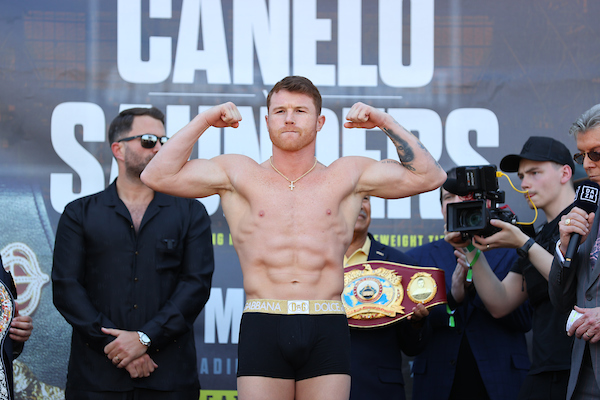
By Norm Frauenheim–
The Forbes list used to belong to Floyd Mayweather Jr., who became better known for dominating the money ranks than the pound-for-pound ratings.
Dollars buy crossover fans and Mayweather seemed to have an endless supply. The cash filled his suitcases and the minds of young fighters, who wanted to spend like him even if they couldn’t fight like him.
The biggest reward for the smallest risk, a ratio and a role model, became as important as any combination of punches. No matter what the sport, Mayweather employed it as effectively as anyone ever has.
But the ratio is vanishing in a pandemic for which there has been no apparent immunity. The risk is still there. Boxing without risk is aerobics. Have a nice workout. But the reward is eroding at a rate that will soon force fighters to think twice about that inherent risk.
The latest Forbes list of the world’s highest-paid athletes was released about a week ago. It includes four boxers – Tyson Fury at No. 11 with $57 million, Anthony Joshua at No. 19 with $47 million, Deontay Wilder at No. 20 with $46.5 million and Canelo Alvarez at No. 30 with $37 million.
At the top, Roger Federer, who is the first tennis player to ever be ranked No. 1 with $106.3 million in earnings and endorsements for the period between June 1, 2019 and June 1, 2020. He won’t be standing in line at any food banks before his next match.
Nevertheless, the list is a red flag, an early earning sign of financial trouble awaiting all sports and especially boxing, which includes few guarantees, other than stitches and scars.
Start at the top. Federer is there with income less than half of what Mayweather earned during days when he was No. 1 often enough to be named for the list. In 2018, Forbes Mayweather led the way with $285 million, most of it from his all-reward and no-risk dance with Conor McGregor, a mixed-martial arts performer then posing as a boxer.
Two to three years later, the money looks to be vanishing faster than a full-time job. Top-to-bottom, the pay-for-play list for the top 100 is down nine percent from what it was a year ago. Cancellations started in late February and never stopped until the entire sports landscape went dark in April. Forbes predicts a steeper decline in its next list. No play, no pay.
https://www.forbes.com/athletes/#696328ea55ae
There are signs that some sports will return this summer in an abbreviated format. The NBA and NHL are talking about schedules at single sites in a format that would essentially be a payoff schedule. For now, baseball is locked into talks about money. Thus far, players are balking at proposed pay cuts.
Boxers aren’t that lucky. During the pandemic, they aren’t collecting any pay anyway. They are independent entrepreneurs. They have to fight to get paid, contract-to-contract. Boxing is set to hit the re-start button on June 9 in a bout featuring emerging featherweight champion Shakur Stevenson against Felix Caraballo in Las Vegas. Further bouts are scheduled throughout June and July.
But, essentially, they will be studio shows. In an effort to safeguard fighters and officials from catching the lethal coronavirus, there will be no fans. No ringside media. The bouts will be televised by ESPN, which is desperate for live content.
Yet, the absence of a live crowd limits the purse. That might be OK for young boxers still fighting to make their name. But for the established star, there’s no chance at earning the big money that was a hallmark of the Mayweather era and its immediate aftermath during pre-pandemic days.
Without a live gate, it’s hard to foresee Fury-Wilder 3 or a third Canelo Alvarez-Gennadiy Golovkin fight any time soon. How about Terence Crawford-versus-Errol Spence Jr.? Not this year, if ever.
No live gate also looms as a potential complication for Manny Pacquiao, the Filipino Senator who had been hoping to fight sometime this summer.
Pacquiao had been fighting for about $20-million. That’s a big number. He’ll be 42 on Dec. 17. That’s a short window for a fighter near retirement.
A solution? There might not be one during a stretch when the money will be short and Forbes forgettable.










